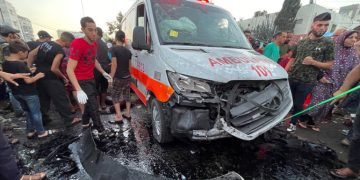WEB DESK
Spain’s controversial bull-running festivals have once again hit the headlines after a deadly summer in which at least 10 people lost their lives, exacerbating divisions over the centuries-old tradition.
Seven deaths occurred in the eastern Valencia region where the practice of releasing bulls into the streets for entertainment has sparked debate, with the other fatalities taking place in the regions of Madrid, Castilla y Leon and Navarra in the north.
This year’s toll raises to more than 30 the total number of people who have been killed in Valencia’s bull-running events since 2015.
This summer’s victims, who died from injuries sustained while racing through the streets alongside a group of hefty bulls – known as “bous al carrer” in Valencian – were between the ages of 18 and 73.
Six of them were men and one was a woman – a French woman who was the oldest victim.
They died after being gored or trampled by the bulls. Countless other people were injured, among them minors.
Bull-running events are a highlight of summer festivities across Spain, with the best known being the San Fermin festival in the northern city of Pamplona.
The idea is that a small group of bulls are let loose into a fenced-off area of the streets and hundreds of foolhardy thrill-seekers run alongside them for a few adrenaline-fuelled minutes, in a spectacle that draws thousands of spectators.
In Valencia and in southern parts of neighbouring Catalonia, such events are hugely popular and few are the villages that don’t put on some sort of entertainment involving bulls barrelling through the streets.
There are also “bous a la mar” – races to the seafront where at the end of the run, the participants vie to try and make the bulls fall into the water, most ending up there themselves.

















































